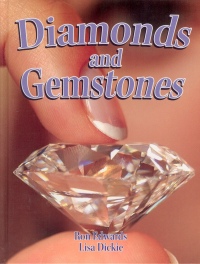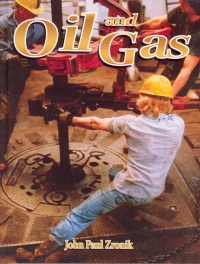| ________________
CM . . .
. Volume XI Number 9. . . .January 7, 2005
excerpt:
This informative six-volume series examines a variety of natural resources found beneath the earth's surface. The books, identical in layout, average 10 chapters each and include a table of contents, a brief glossary and an index. Text is large in size and fairly easy for readers to comprehend despite some of the more difficult scientific concepts presented. The abundant illustrations, consisting of maps, diagrams and photographs, are colourful and perfectly suited to the text. In fact, the illustrations often serve to clarify the concepts. Topics in Coal include the formation of coal, its history (especially since the Industrial Revolution which resulted in the increased use of coal in factories and steam trains), methods of locating, mining and processing coal, and the location of major coal deposits around the world. The dangers inherent in coal mining - cave-ins, explosions, toxic gases and dust - and the growth of mining communities are also discussed. Present-day uses of coal (in the manufacture of steel and the production of electricity) and the resultant pollution, such as acid rain and global warming, are presented along with information about alternatives to coal, such as wind, water and geothermal power. Of the five titles reviewed, this one is the least interesting, perhaps due to the subject matter. More exciting to read is Gold, likely because of the world's continued fascination with this shiny metal. From the times of Julius Caesar, the Egyptian kings and pirate ships and buried treasure to the California Gold Rush of 1849, this book traces gold's history. Open pit versus underground mining, leaching and refining gold from ore, and the environmental effects of gold mining on land and water are also highlighted. Other topics include the use of gold in money, jewellery, dental fillings, delicate surgical instruments and laser eye surgery as well as its value in the electronics industry. Gold's decorative use in the form of gold leaf, which is applied to furniture, vases and religious icons and other artwork, is also covered. Despite its being very common and found in all parts of the world, salt is a valuable commodity. Salt provides information about salt's chemical composition, its formation and the ways in which it is found, mined and refined. Readers will be intrigued by the explanations and photographs of the Dead Sea which is 10 times saltier than the oceans, and of the salt flats of Lake Bonneville in the U.S., on which drivers race cars. Salt's past and present uses, alone and in combination with other chemicals, are also highlighted. Some examples are sodium hydroxide (caustic soda), used to unclog drains and in the manufacture of paper, cellophane and rayon, and sodium bicarbonate (baking soda), commonly used as a leavening agent, as well as to relieve heartburn, whiten teeth and absorb household odors. Finally, the book describes salt pollution and the environmental legislation to prevent it. The differences between organic and mineral gemstones are outlined in Diamonds and Gemstones. This title also covers such topics as the formation of diamonds, diamond mining, erosion and pollutants from the mining process, security and smuggle-proofing in the mines, finishing the stones and the ways in which a stone is faceted. History and legends surrounding some famous gemstones will appeal to readers. A double-page spread is devoted to birthstones, complete with an explanation of the qualities which each stone represents (e.g. January's garnet stands for loyalty, friendship and bringing the owner good health). Information is also provided about the manufacture of synthetic gemstones such as cubic zirconia. Lastly, the diamond's importance to industry and medicine because of its use in instruments, such as blades, scalpels and surgical knives, is covered. Oil and gas are fossil fuels that have become precious commodities. The formation of these fuels in sedimentary rock, the ways in which geologists test rock to see whether it contains oil, and the drilling, refining and transporting of oil are all discussed in Oil and Gas. An increasing demand for oil, particularly since the invention of the automobile and oil's use in the manufacture of nylon and plastics, has led to skyrocketing prices as well as an increase in pollution. This title provides information on these topics as well as some alternatives to oil. Very informative and filled with excellent photographs, these books have a place in any library. A sixth title in the series, Minerals, is also available but was not reviewed. Recommended. Gail Hamilton is a teacher-librarian at Bird's Hill School in East St. Paul, MB.
To comment
on this title or this review, send mail to cm@umanitoba.ca.
Copyright © the Manitoba Library Association. Reproduction for personal
use is permitted only if this copyright notice is maintained. Any
other reproduction is prohibited without permission.
NEXT REVIEW |
TABLE OF CONTENTS FOR THIS ISSUE
- January 7, 2005.
AUTHORS |
TITLES |
MEDIA REVIEWS |
PROFILES |
BACK ISSUES |
SEARCH |
CMARCHIVE |
HOME |




